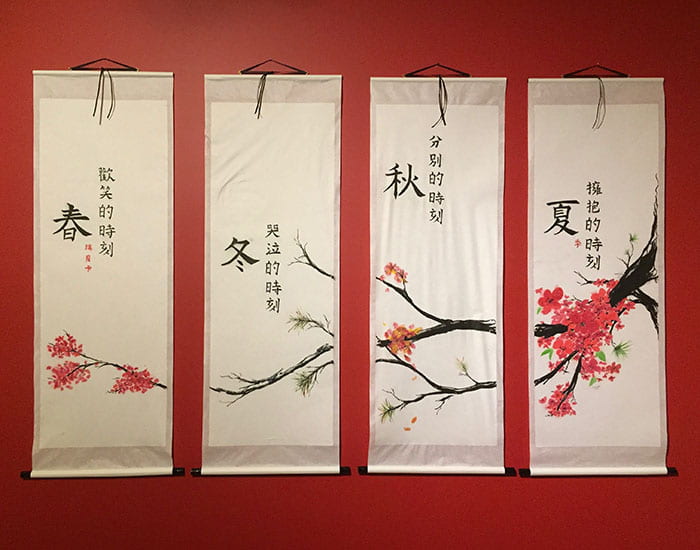UNE Chinese lecturer Dr Shi Li has the opportunity to share his skill and love of Chinese calligraphy each year with his students in a dedicated unit in the Chinese language and culture course.
A past Chinese journalist and broadcaster, Dr Li believes Chinese calligraphy – a practice he began to learn at seven year of age – has an important and unique role to play in communication around the world as well as in art and culture.
“To quote a famous calligrapher from the Tang dynasty, Zhang Huaiguan, ‘it takes several words for an article to convey an idea, it takes only one character for a calligraphy to display a heart-mind’.
“Having sometimes profound meaning embodied in character makes it very appealing to cultures all over the world; Chinese calligraphy is a trinity of art, exotica and meaning,” Dr Li says.
Dr Li says that while a greater visibility of Chinese calligraphy in Australian shop signs, interior decorations, advertisements, even personalised garments and body art is “enlivening Australia with an exotic aesthetic and oriental musings”, you get more out of it by learning and practising it yourself.
“Practising Chinese calligraphy is an example of the Daoist philosophy of ‘doing by not doing’. It provides a new option for Australians to calm their hearts and minds in their fast-paced lives. Through managing the Qi (energy) in the subtle movement of the brush and concentrating on the aesthetic of Chinese calligraphy, their hearts and minds are set free from internal and external distractions.”
Dr Li says in this way the 3,000 year old ancient communication form is taking on new relevance in Australian life, where communication is often shallow, fast and distant in our modern digital world. In contrast, Chinese calligraphy is personal and communal.
“It’s often said that you can tell a person’s inner nature and personality from their calligraphy. So you can develop a stronger sense of self through practising Chinese calligraphy.
“It also brings people together in the classroom and for exhibitions. The hands-on instruction and mutual support can foster a sense of belonging and help improve emotional intelligence and human relationships.”
He says the most challenging thing for Australians is learning a slow communication form that takes a lot of patience. “But it’s a great opportunity to develop one’s tenacity and hone one’s temper!”
With its growing popularity, Dr Li says there’s been a flourish of effort to formally protect and enhance the role of Chinese calligraphy in Australian cultural life.
“The Australian Association of Chinese Calligraphers was established in 2012, which organises exhibitions of collective and individual calligraphy works on an annual basis, and since 2016, also holds a bi-annual Chinese calligraphy competition.
“Five Australian universities now offer courses in Chinese calligraphy, whereas five years ago it was just the University of New England and Macquarie University.”
Dr Li’s most recent class of 24 students prove that with some dedication, the basics of Chinese calligraphy can be harnessed in a short amount of time – his students have just three months to produce a finished artwork.
“People are always impressed by the talent and creativity my students show in such a short amount of time in their carefully prepared and beautifully presented artworks.”
You can view a gallery of a sample of the students’ works on the UNE website. 
Feature image: Artwork ‘For every moment there is a season’ by Rebecca Samways, a student in Dr Shi Li’s Chinese calligraphy class 2019



Recent Comments